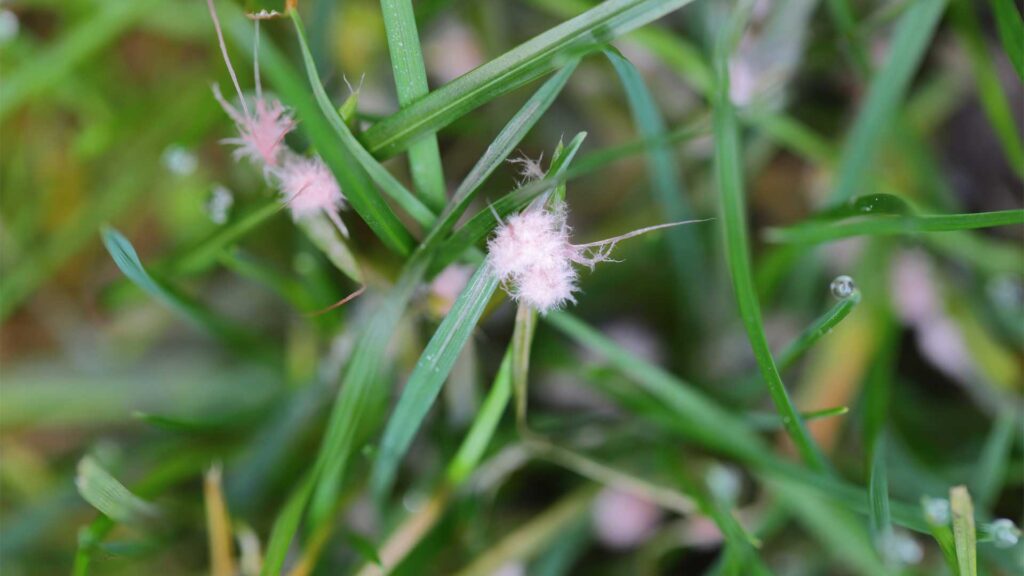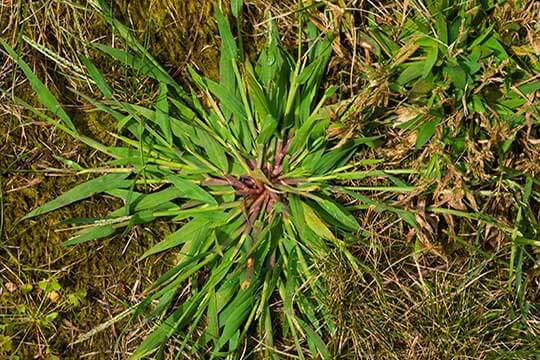Red thread is a common lawn disease that causes light to moderate damage. While it can affect all types of turfgrass, fine fescue is particularly susceptible.
How to recognize red thread
Red thread typically appears as small reddish patches, 5 to 15 cm in diameter, that gradually fade to yellow. These spots may blend together, giving the lawn a dry or drought-stressed appearance. In advanced stages, distinctive pinkish-red threads can be seen at the tips of the grass blades—this is the telltale sign of the disease. Symptoms tend to be more visible during dry periods, which can make red thread easy to confuse with simple water stress.
Why does this disease appear?
Red thread thrives under specific conditions, particularly when humidity is high and temperatures are cool. It is more likely to develop in compacted soil, in lawns with excess thatch, or when turf is weakened by poor fertilization or inadequate watering.
How to prevent and control red thread
- Proper mowing: Keep your lawn between 8 and 10 cm tall to encourage dense, resilient growth.
- Optimal watering: Water early in the morning and avoid soaking the soil. Make sure the lawn dries fully between waterings to limit fungal spread.
- Aeration and dethatching: Aerate your lawn in spring or fall to improve air and water circulation. If thatch buildup is excessive, dethatching may also be necessary.
- Balanced fertilization: Apply the right nutrients to help your lawn stay strong and better resist diseases.
Professional care for a healthier lawn
By following these best practices, you can greatly reduce the risk of red thread and maintain a thick, vibrant lawn all season long.
A healthy, dense lawn is your best defense against turf diseases and pests. Contact your Nutrite Expert today for a personalized lawn care plan that meets your specific needs.





